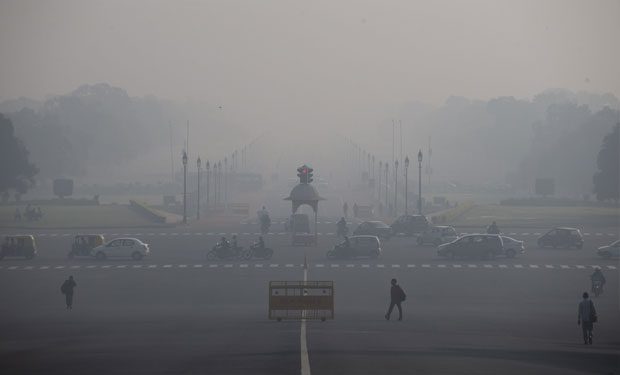London: Over 674 million Indians are likely to breathe highly polluted air in 2030, even if the country were to comply with its existing pollution control policies and regulations, according to a study.
The study, released by the International Institute for Applied Systems Analysis (IIASA) in Austria and the Council on Energy, Environment, and Water (CEEW) in New Delhi, shows that only about 833 million citizens would be living in areas that meet the National Ambient Air Quality Standards (NAAQS) in 2030.
Indian citizens are likely to breathe air with high concentrations of PM2.5 in 2030, even if India were to comply with its existing pollution control policies and regulations, the report said.
The study also found that the Indo-Gangetic plain, covering parts of states such as Punjab, Haryana, Uttar Pradesh, Bihar, and West Bengal, has the highest population exposure to significant PM2.5 concentrations.
This is mainly due to the high density of polluting sources and reduced ventilation by the obstructing presence of the Himalayas.
Citizens living in parts of Bihar, West Bengal, Chhattisgarh, and Odisha are also exposed to high levels of PM2.5.
However, aligning sustainable development policies to the implementation of advanced emission control technologies could provide NAAQS-compliant air quality to about 85 per cent of the Indian population. In 2015, more than half the Indian population — about 670 million citizens — were exposed to PM2.5 concentrations that did not comply with India’s NAAQS for PM2.5 (40 migrogrammes per cubic metre).
Further, less than one per cent enjoyed air quality that met the World Health Organisation (WHO) benchmark limit of 10 migrogrammes per cubic metre.
In January 2019, the government launched the National Clean Air Program (NCAP), a five-year action plan to curb air pollution, build a pan-India air quality monitoring network, and improve citizen awareness.
The programme focuses on 102 polluted Indian cities and aims to reduce PM2.5 levels by 20-30 per cent over the next five years.
The analysis conducted by researchers from IIASA and CEEW however suggests that NCAP needs to be backed by a legal mandate to ensure successful ground-level implementation of emission control measures.
In the long-term, NCAP also needs to be scaled-up significantly to ensure that rapid economic growth and meeting NAAQs are aligned.
The study also highlighted a stark variance in factors contributing to air pollution across the states. Solid fuel, including biomass combustion for residential cooking, is the largest contributor in the major states of the Indo-Gangetic Plain.
However, in Delhi and Goa, it contributes only a small amount due to enhanced access to clean fuels in these states.
Instead, NOx emissions from transportation are major contributors to air pollution in these two states. Similarly, SO2 emissions from power plants are dominant contributors to air pollution in Haryana and Maharashtra.
In coming years, every state government must commission detailed scientific studies to better understand the sources contributing to air pollution in their cities.
Another challenge for many states is that emission sources that are outside their immediate jurisdiction contribute significantly to ambient pollution levels of PM2.5.
PTI






































